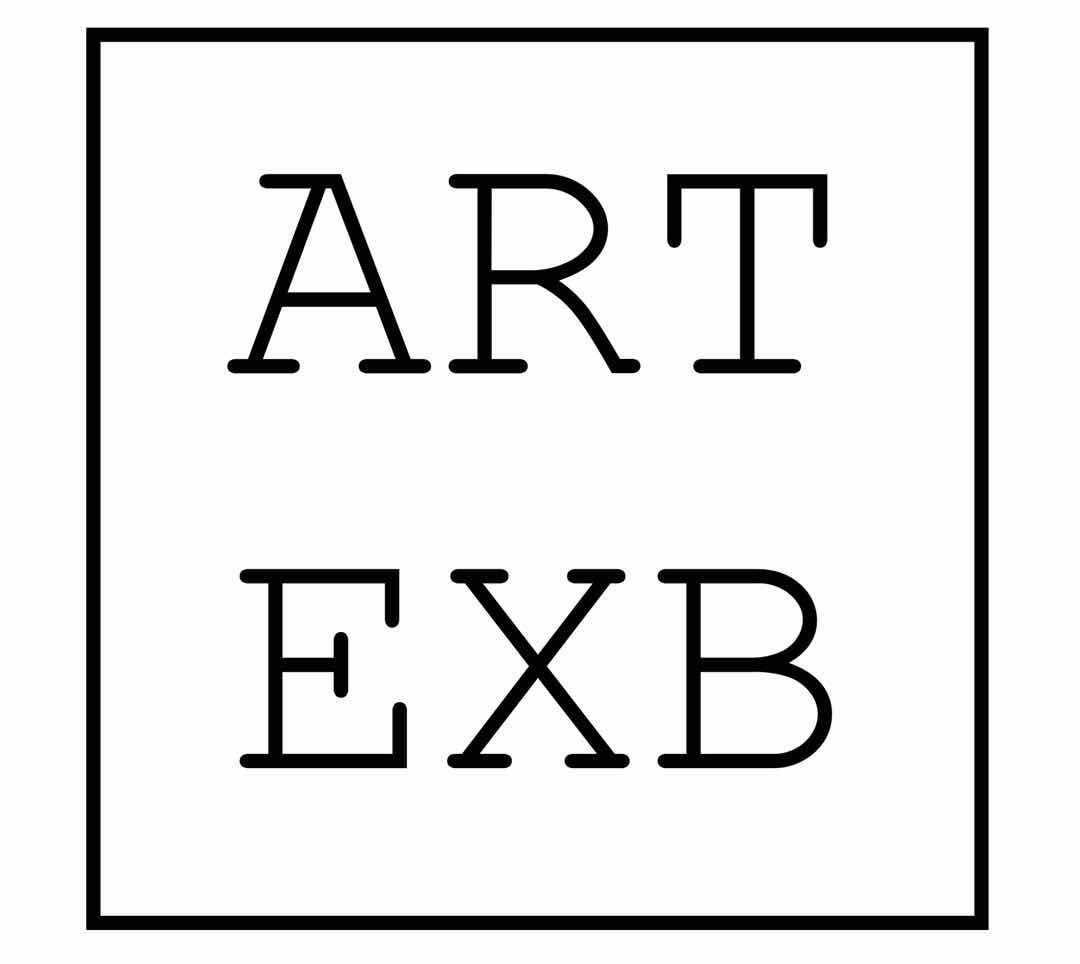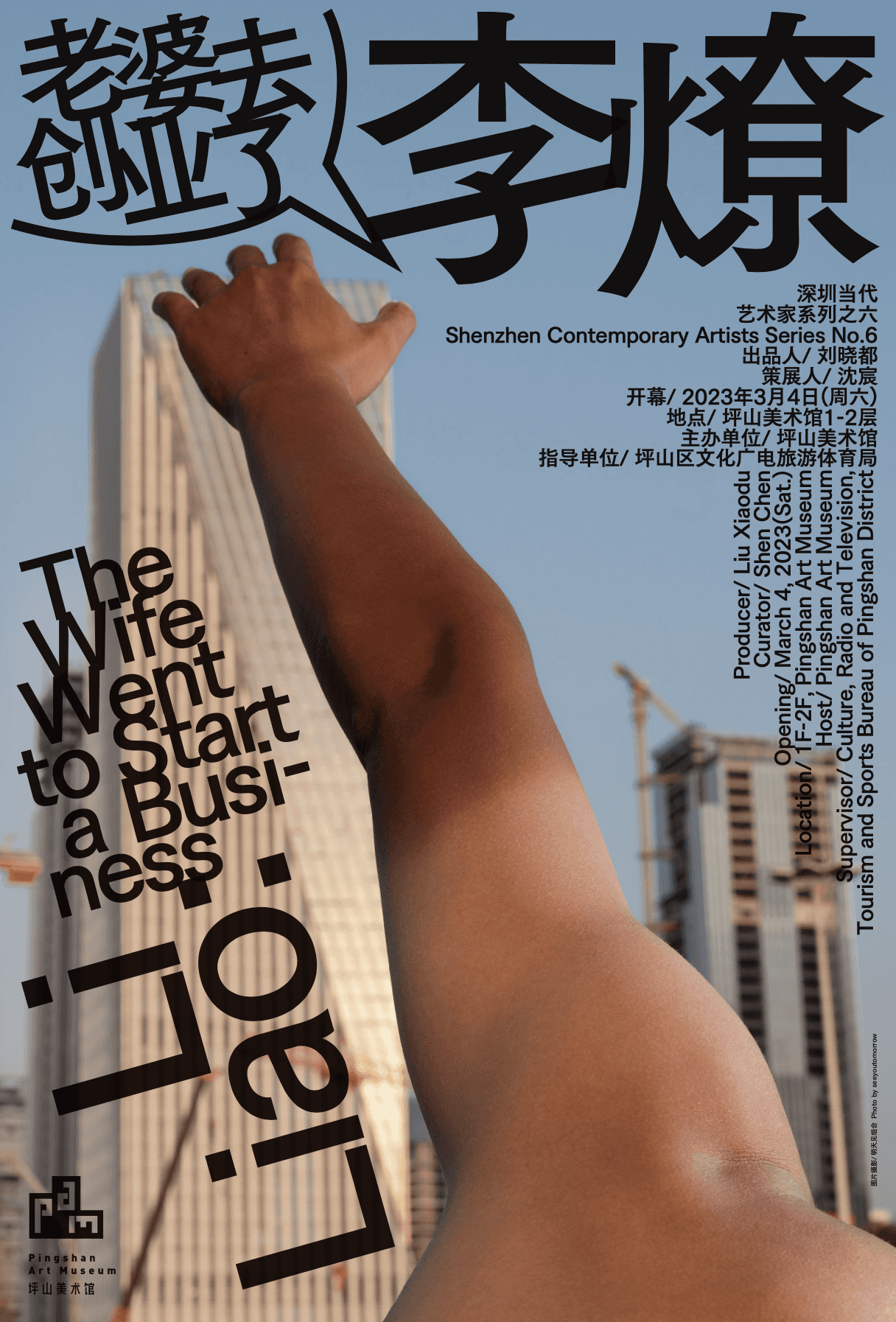坪山美术馆|深圳当代艺术家系列|总序
历史的进入与深耕
深圳当代艺术的发展最早可以溯源至85新潮时期,当时深圳作为一个新兴的、充满想象张力的城市,催生和兴起了一些零星的艺术行动和个体实践,但其时,深圳的使命还是在于经济和政治领域的试验与奇迹创造,文化艺术的发展处于 “萌而未发” 的状态。
直至1997年,深圳同一年建设和开放了何香凝美术馆和关山月美术馆,深圳的当代艺术由此呈现出了日渐明朗的学术定位和版块性的崛起和活力。而2005年,由黄专先生参与发起的OCAT在深圳正式成立,标志着深圳当代艺术的主体意识的觉醒,可以说中国当代艺术的深圳立场和独立工作,助推了中国当代艺术的学术梳理和价值建构。深圳的当代艺术在这个阶段,也经历了空降式和事件型艺术的兴奋期,涌现出了数目惊人的双年展。客观而言,这一系列实践松动和培育了深圳当代艺术的土壤,也推动和塑造了今天的深圳当代艺术发展的基本面貌。
坪山美术馆的成立,便是在此背景下的应时而生和顺势而为。在过去两年多的工作中,我们始终强调以历史的眼光、当代的支点和审慎的判断来介入当代艺术的现场和地方艺术的建设,此次推出的深圳艺术家个案系列,也是基于深圳当代艺术的现实情境和发展阶段,期望以激发、助力和沉淀的行动推动深圳当代艺术的主体建构。我们希望通过个案的梳理来呈现深圳当代艺术的结构与肌理,肌理越饱满,城市也会更有精神的厚度和潜能。
深圳当代艺术呈现出个体迁徙、频繁流动的状态,我们对 “深圳当代艺术家” 的界定也因应这种特质。他们中既有深耕二三十年的艺术家梁铨、周力,也有在深圳开启其艺术的重要岁月后又北上的蒋志,还有新生代的80后艺术家李燎;既有近几年离开学院迁徙到深圳的薛峰,也有处于候鸟状态、将深圳作为 “落脚城市” 的沈少民。我们都将他们纳入到深圳当代艺术家的范畴进行考察、梳理和展览呈现。我们当然深知其判断本身一方面会推动地方艺术生态的基础建设,同时也意味着这个工作会充满挑战和艰辛。但我们坚信,发展到今天的深圳当代艺术,亟需对自己过去短暂而丰富的历史进行回顾、梳理和审视,并对此时此地的现场形成观察和判断。深圳当代艺术要继续靠前走,就需要有一些自我的审视和冒险。
记得已故的深圳当代艺术的重要推动者、艺术评论家黄专说过一句话:“不是什么时代都能进入历史,只有那些真正改变了我们的生活价值的时代才能进入历史;不是任何人都能进入历史,只有那些真正具有创造能力的人才能进入历史。” 坪山美术馆就是在寻找那些 “改变” 和 “创造”,并将其编织到当代艺术的深圳叙事之中,我们希望以此为深圳、为中国南方当代艺术生态搭建出一些牢固和有时间重量感的 “基础设施”。
坪山美术馆馆长 刘晓都
深圳当代艺术家系列读本策划 钟刚
李燎:老婆去创业了
“艺术源于生活,又高于生活。” 关于艺术与生活之关系的这则金句于李燎这里,不如说是:生活激发艺术,艺术融入生活。从《艺术是真空》(2013-2018)到《做更好的人》(2019),再到如今的《老婆去创业了》(2022),李燎的创作贯穿了他从恋爱到为人夫、为人父的人生历程,以及他的爱恨情仇。观众或许难免想到近年来极为火热的电视娱乐类型 “真人秀”。但与之不同的是,李燎的行动并不预设或强调生活与艺术的 “真” 与 “假”,或者说他的行动坦诚于生活与艺术本就是真假难辨的(若艺术家说真,假也成真)。至少在他那里,两者的界限被抹平了。
或许是受到深圳作为设计与创业之都氛围的影响,在本地某服装公司打拼多年之后,李燎的老婆杨隽终于下定决心辞职创业,创立自己的服装品牌。毫无疑问的是,老婆及全家都需要为此付出更多的时间、精力、成本。李燎决定外出劳动以补贴家用。而对于并无惯常社会工作经验与简历的 “大龄艺术青年”,送外卖成为了于当下环境中某种顺其自然又不得已的选择。项目以赚取足够支付一个月家庭房贷的工资为时间期限。
然而在具体的生活困境面前,无论以何种方式,劳动于李燎来说仍是种天然的选择,也是一直以来可以依靠的底线。它很踏实,能带来具体而直接的回报,以及单纯的满足和愉悦。因此,与其说李燎是为了开展艺术项目去劳动,倒不如说劳动才是生活与创造的来源和根本。
在外卖系统的指引下,李燎的劳动是高强度、高流动性的,日复一日、循规蹈矩。但同时其在深圳的行动半径也得到了极大拓展,深入到城市空间的诸多 “缝隙” 中。尤其是,其行动轨迹并不是自我预设的,而是充满了诸多意外的 “城市漂移”,由此不得不面对和处理那些突如其来的情况与信息:视觉的、气味的、声音的、温度的,乃至即时的想法与情绪等。因此当他开始劳动,城市成为触发创作的 “工作室”,人的经验也变的丰富起来,捕获到以往想象不到的视角,以及只有在这个视角下才能敏感于的形式与感性:铺装不同路面的肌理和骑行震感,临时交通护栏、斑马线或安全岛上的痕迹、下雨天在憋闷安全头盔里的艰难呼吸、体力不济时的忙里偷闲,凡此种种。然而这似乎就是劳动的魅力,李燎逐步混淆了劳动与创作的区别,忘我而全情投入,感受来自人的坚韧和积极,以及面对困苦压力的磨砺。
由此,《老婆去创业了》成为了李燎再次以家庭和个人的生活与生存境遇的转变为契机,进行的一次心理地理学意义上李燎式 “行为” 的实施。在扮演 “外送员” 这一极具当下现实意义的流动身份所采取的行动过程里,对社会转型中的家庭、现代城市肌理、公共空间与私人领域、“消费-生产-劳动”、“个体-集体-系统”、流动的现代性等议题加以观察和重思。以及更为重要的,藉由劳动,反哺和重新审视外在的生活,并进行生命经验的深层探索和自我觉悟。就像他在作品中展现的那样,走向外部的真实世界,却背对 “系统之神”,向 “大风车” 进发,感受光和热,在歌声中,赞美云。
策展人 沈宸
Pingshan Art Museum | Shenzhen Contemporary Artists Series | Prelude
Making History and Making Endeavors
The development of contemporary art in Shenzhen can be traced back to as early as 85 New Wave period. At that time, as a burgeoning and imaginative city, Shenzhen gave birth to some sporadic art movements and individual practices. However, Shenzhen then was obligated to undertake the mission of conducting experiments and thereby working miracles in the economic and political fields. As a result, culture and art were emerging, with dramatic growth yet to come.
Until 1997, Shenzhen witnessed the building and opening of He Xiangning Art Museum and Guan Shanyue Art Museum in the same year. Contemporary art in Shenzhen has shown an increasingly clear academic positioning, while demonstrating the rise and vitality of Pearl River Delta in the contemporary art context. In 2005, OCAT, initiated by Huang Zhuan among others, was formally established in Shenzhen, marking the awakening of the subjective consciousness of contemporary art in Shenzhen. It can be concluded that Shenzhen position and its independent efforts concerning Chinese contemporary art have helped facilitate the academic research and value construction of Chinese contemporary art. At this stage, the contemporary art in Shenzhen has also witnessed the sprouting of non-indigenous and events-based art when a surprising number of biennales came out. Objectively speaking, the series of practices loosened and cultivated the soil for contemporary art in Shenzhen, while promoting and shaping the basic appearance of the development of contemporary art in Shenzhen today.
Against this backdrop, Pingshan Art Museum was established as the times demanded. Over the past two years of work, we have been emphasizing historical perspectives, contemporary pivots and prudent judgment, which should play a role in the construction of contemporary art scenes and local art. Based on the realistic situation and development stage of contemporary art in Shenzhen, the Shenzhen Contemporary Artists Series is expected to promote the major construction of contemporary art in Shenzhen by means of inspiring, assisting and inheriting acts. We hope to present the structure and texture of Shenzhen contemporary art through the analysis of individual cases. The richer the texture, the greater intellectual thickness and potential the city will have.
The contemporary art in Shenzhen presents a state of individual migration and frequent movement, which prompts the definition of “Shenzhen Contemporary Artists”. Among them are the artists Liang Quan and Zhou Li who have been involved into the field for 20 or 30 years, Jiang Zhi who went north after the momentous years of starting out a career as an artist in Shenzhen, as well as Li Liao born in 1980s. Besides, the said artists also include Xue Feng who has left school and moved to Shenzhen, and Shen Shaomin, who treats Shenzhen as a temporary place of lodging like a migratory bird. We categorize them as Shenzhen contemporary artists for inspection, sorting and exhibiting. Certainly, we are aware that the judgment itself will promote the infrastructure construction of the local art ecology on the one hand, which also means that this work will be full of challenges and hardships. However, we firmly believe that the shenzhen contemporary art today needs to be reviewed, sorted out and examined concerning its short yet rich history, thus resulting in observations of and judgments on the scene here and now. Should the contemporary art in Shenzhen advance, it needs some self-examination and adventure.
I recall that the late Huang Zhuan, an important promoter of contemporary art in Shenzhen and an art critic, said: “Not all times can go down in history. Only those times that have truly changed the value of our lives can make history; not everyone can go down in history. Only those who are genuinely able to produce creations can pass into history.” Pingshan Art Museum is looking for those “changes” and “creations”, while weaving them into the narrative of Shenzhen contemporary art. We hope to build some solid and time-honored “infrastructure” for Shenzhen and for the contemporary art ecology in southern China.
Liu Xiaodu, Director of Pingshan Art Museum
Zhong Gang, Editor of Readers of Shenzhen Contemporary Artists Series
Li Liao: The Wife Went to Start a Business
“Art comes from life but goes beyond it.” This classic statement on the connection between art and life may be better put as “life sparks art and art infuses life” for Li Liao. In his works, from Art is a Vacuum (2013-2018), To Be a Better Man (2018), to The Wife Went to Start a Business (2022), Li Liao takes the audience through his journey of love, marriage and fatherhood, as well as all the joys and struggles that come along. It might remind us of those popular reality shows, but with a crucial difference: the artist blurs the lines between reality and imagination in art and life. Or rather his artworks are honestly based on the fact that life and art are inherently blended (if the artist says something is real, then it’s real, even if it’s not) The boundary in between becomes indistinguishable, at least in Li Liao’s works.
The entrepreneurial and creative atmosphere in Shenzhen seems to have rubbed off on Li Liao’s wife, Yang Jun. After years of working at a local garment company, she’s finally decided to pursue her dream and launch her own fashion label. This would surely require the whole family to pitch in, putting in extra time, effort and money to make it a success. To help make ends meet, Li Liao decided to take on a job on the side. For a “midlife hipster” with no prior work experience or resume as others usually do, delivering food, as an effortless choice, became his last resort. And the goal is to earn enough money to cover one month of the family’s mortgage payment.
Faced with this concrete challenge, labor, no matter what kind of labor, would remain a natural way out for Li Liao. As a reliable safety net, it will provide stability and tangible benefits, as well as simple satisfaction and joy. Thus, it could be said that working is the foundation and source of Li Liao’s livelihood and artistic pursuits, rather than just a means to an end for his art.
Under the guidance of the food delivery system, Li Liao’s work is demanding and constantly on the move, with a routine that repeats every day. But at the same time, his range of mobility in Shenzhen has grown considerably, reaching into the many “crevices” of the city space. Notably, the path of his movement is never pre-planned, but filled with sudden “urban drifts” bringing unexpected encounters and information his way: sights, smells, sounds, temperatures, and even spur-of-the-moment thoughts and feelings. When he started to work, the whole city thus became his “studio”, fueling his creativity and adding to his life experiences. Li Liao discovered a new perspective that he never thought possible, as well as a sense of form and sensibility that could only be seen from the unique viewpoint as a delivery man: He felt the textures of different road surfaces beneath his e-bike, the vibrations of riding, the scrapes and scuffs on temporary traffic barriers, zebra crossings, or safety strips. He also experienced the struggle of breathing inside the suffocating helmet on rainy days or found himself slack off when running low on energy. However, the appeal of work started to blur the line between labor and creation for Li Liao. He has become completely dedicated into the cause, embracing the resilience and positivity of humans honing skills under the pressure of adversity.
Therefore, “The Wife Went to Start a Business” becomes a psycho-geographical “act” unique to Li Liao, taking advantage of the transformation in the artist’s family life and personal circumstances to explore and reflect on the changing world around him. Playing a “delivery man”, a mobile role that is highly relevant in today’s society, Li Liao observed and reflected on the shifting dynamics of families, the urban landscape, as well as the relation between public and private spaces, while delving into the interplay between “consumption, production and labor”, or between “individual, the collective and system”. The modernity of mobility was also discussed during his creation of art. More importantly, through his work, Li Liao enriched and reevaluated his external life, thus carrying out a profound exploration of his life experiences and gaining a greater sense of self-awareness. Just as depicted in his art, Li Liao finally ventured into the real world outside. Breaking free from the constraints of the “System”, he set out on his own journey toward the giant “windmill”, while basked in an ode to clouds.
Shen Chen, Curator

